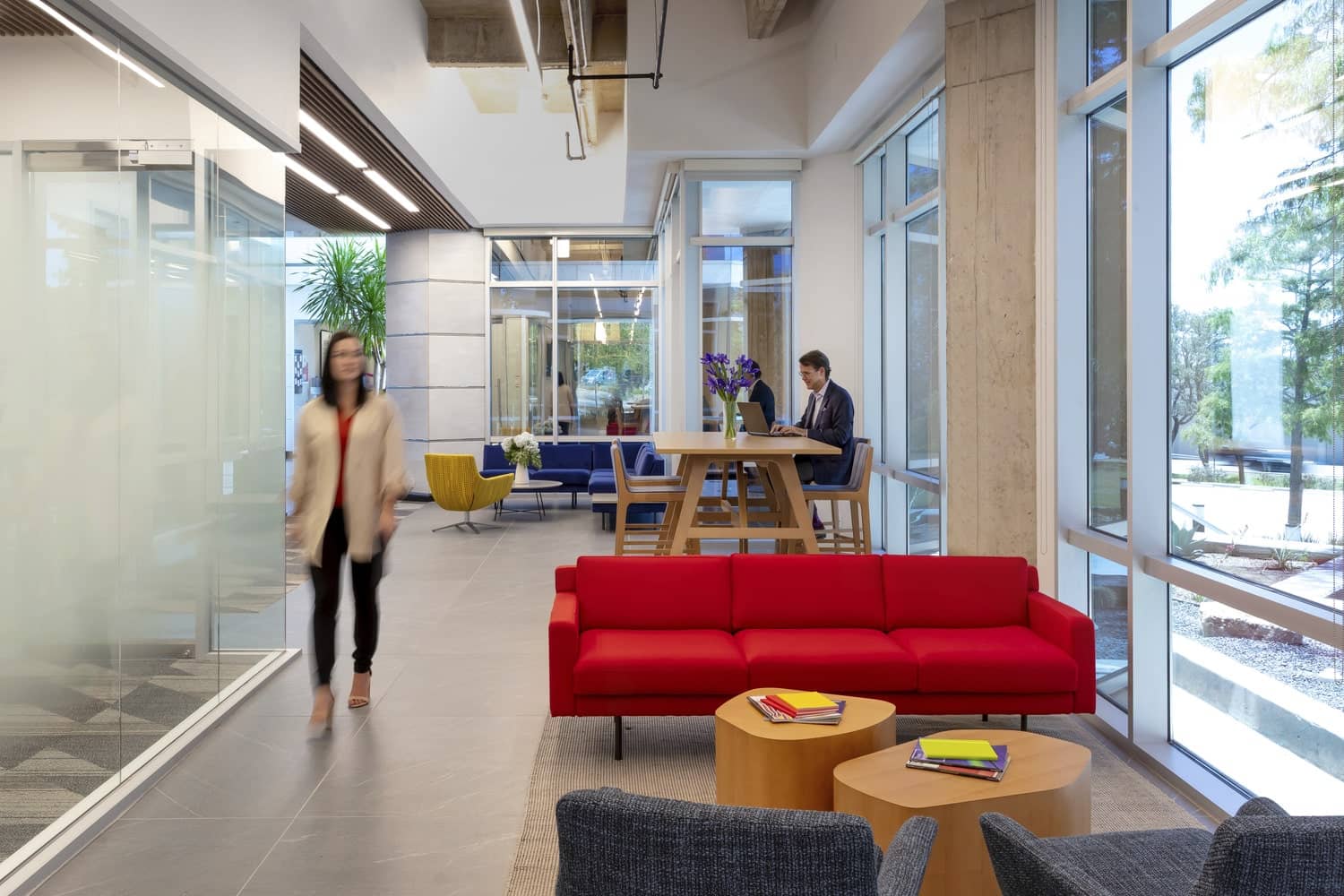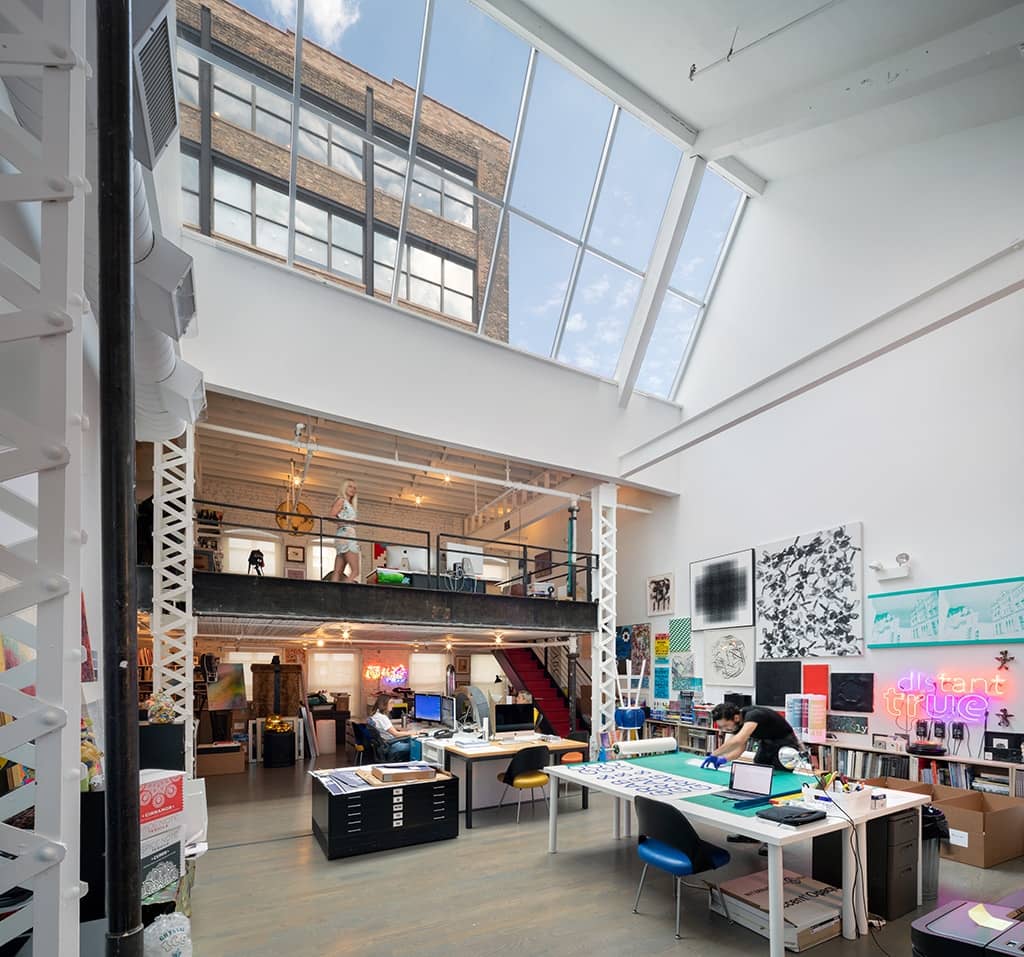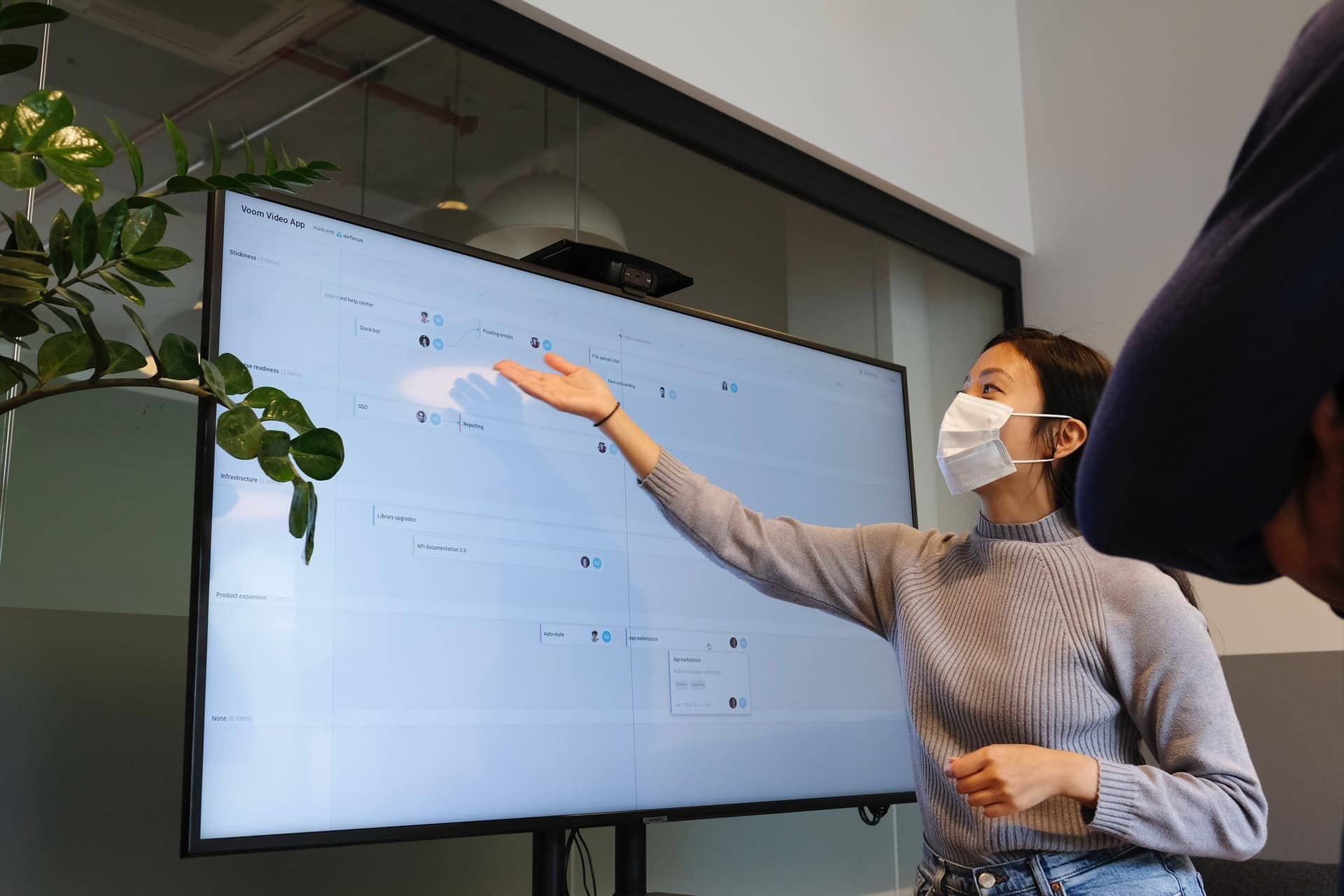Regarding office work in the pandemic era, the only constant is change. There’s more variation than just the COVID-19 variants, of course. For some, returning to the office might be a corporate plan on its 7th revision. For others, it might be an “opposite day”-like jest — “We call it ‘Work From Work Wednesday,’” said a New York City HR manager. For leading office owners, however, the variation is adaptation in the form of major health and wellness improvements to properties.
Like the COVID-19 pandemic, the path back to the office has had many twists and turns. According to the Bureau of Labor Statistics, the share of employees who worked remotely at least at some point peaked at 35 percent in May 2020, but dropped in October to 11 percent, the lowest percentage since the start of pandemic.
However, according to a report by the Partnership for New York City, a closer gauge of New York City’s one million office workers indicated that as of late October 2021, 28 percent of Manhattan employees are in the office on an average weekday, with only 8 percent in the office five days a week. The survey also found that employers expect 49 percent of workers to be back in the office on an average weekday as of February 2022, with 57 percent in the office at least three days a week while 21 percent remain fully remote.
Hybrid: Help or Half Measure?
Every team, whether it be work, school, sports or family, must balance the needs of the group with that of the individual. As the saying goes, “the whole is greater than the sum of its parts,” but in this pandemic era with the business world planning the most effective way to return to the office, those parts, i.e., people, have more power and preference than ever.
The work-life genie is not going back in the bottle anytime soon. Professionals have experienced, if not embraced, the work-from-home setup during the pandemic and its advantages, which include the lack of a commute. Three-quarters of Avison Young survey respondents claimed they were able to maintain a healthy work-life balance while working from home. Furthermore, 89 percent of those surveyed felt that their home environment enables them to work productively, and 93 percent maintained that they work effectively with managers and colleagues from their home office.
Rather than challenge those new realities, a move that could produce the new, more expensive challenge of having to replace a departed employee, some employers are embracing the hybrid work model in pursuit of the best of both worlds — that individual-group balance.
In their efforts to strike the right balance with that type of work model, nearly 60 percent of employers in a Steelcase survey report that the biggest benefit of the blended work approach is the ability to attract and retain talent, while the greatest negative is culture erosion. The New York Times called the latter a “mushy middle ground” where separated teams are having to endure glitchy video calls and worry about unevenly distributed perks.
The GlobeSt. report of the Steelcase research shows the workplace yin and yang, the critical, hard-to-achieve balance of group and individual, a dynamic that has been radically altered in the past two years. From “Remote First” companies to “One Zoom All Zoom” team rules and beyond, flexibility is commonly preached, but it must include the requisite trust. In this unprecedented business era, reinvention, not resumption, may be the order of the day.
“Although it will look different for everyone, hybrid work is, perhaps, the biggest opportunity organizations have to reinvent their culture,” Moutrey told GlobeSt. “Everyone who works in an office — from the C-suite to junior staff — will need to adjust expectations about how work happens, adopt new behaviors and rethink the role of the office going forward.”
Leveraging the Long View
Swift and sizable in its impact, COVID-19 is still relatively small in terms of time. There are obvious physical effects and reactions, such as office owners retrofitting properties to make them healthier and more germ-resistant and how businesses are revamping work schedules and traffic flows. However, there are longer-term results that won’t fully be revealed for a while. The biggest effect is the one on people.
Despite the advantages of remote work, it does sacrifice opportunities for personal interaction and team building. Psychologists tell us that happy people are ones benefitting from close relationships and a job or pastime they love, as well as the sense of self-worth and accomplishment that comes with helping others. A lot of that is lost without the day-to-day, face-to-face connection with people at the office.
Corporate mobility teams, which traditionally manage remote workers in long-term staffing assignments, offer a helpful perspective with which to evaluate return-to-office plans and hybrid work models, and their frame of reference is built from decades of experience rather than just months. KPMG’s survey of corporate mobility teams indicates that a pandemic-triggered remote work setup could produce many less than desirable effects for employees and employers, including hampering team-building, networking, and the cross-pollination of ideas that come with interpersonal exchange. Other harmful effects of a remote work setup could range from falling wages and hampered diversity and inclusion efforts all the way to deteriorating public transportation.
“One of the points of mobility is to get the diversity of the global employee base really producing the great benefits that we know come from having diverse teams, in background, culture, and getting people working side by side from various parts of the organization,” said Marc Burrows, KPMG’s head of global mobility services.
Amid all of the uncertainty, a couple things are for sure: flexibility is likely to stay and people still do need people. Those facts ensure that companies and their leaders — along with their committed landlord partners — will leave no stone unturned to deliver the best work environment, company setup, and return-to-office plan, balancing individual needs and company culture while never forgetting the things that lead to personal fulfillment and professional production will far outlast the pandemic.
Stay up to date on industry trends, news, and conversations at kbs.com/insights, or click here.




